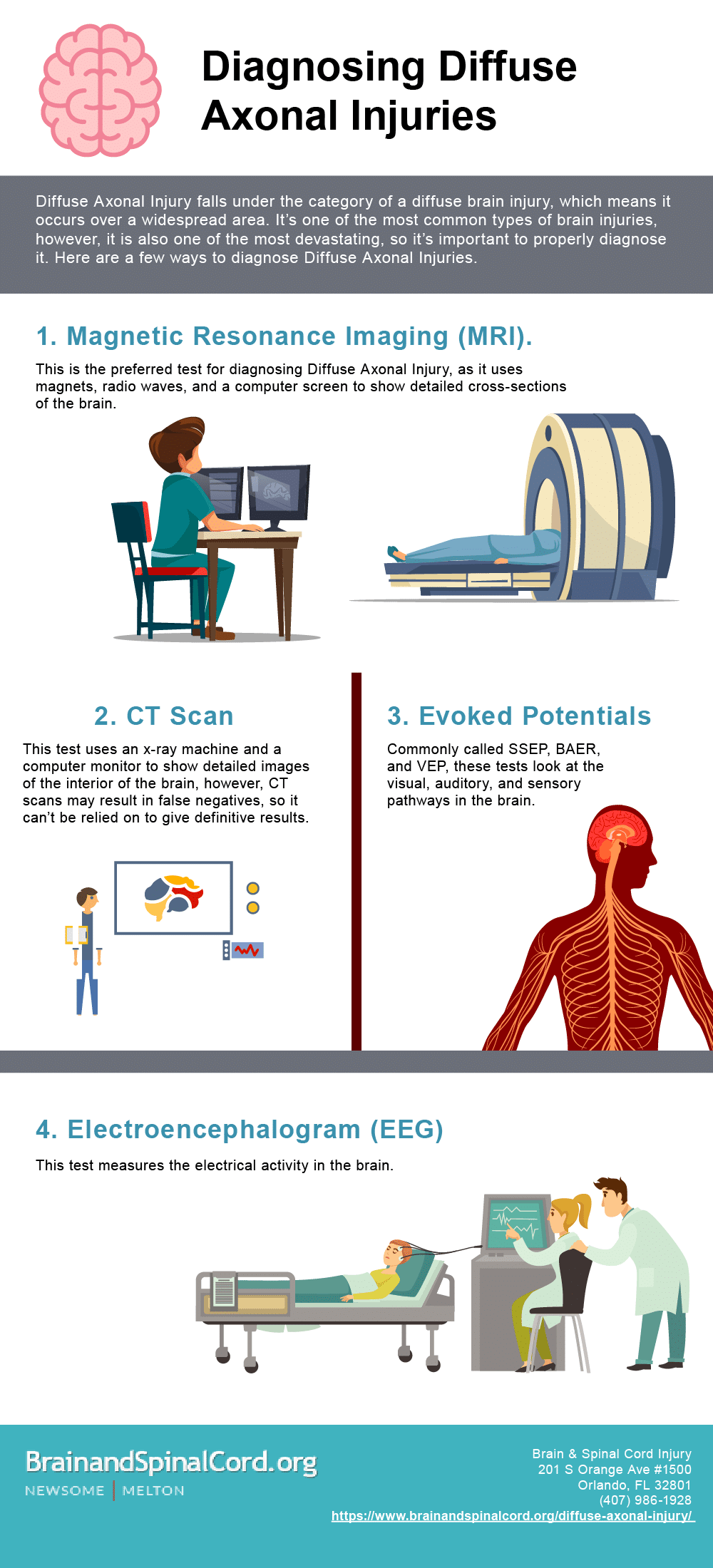Diffuse axonal injury occurs in about half of all severe head traumas, making it one of the most common traumatic brain injuries. It can also occur in moderate and mild brain injury. A diffuse axonal injury falls under the category of a diffuse brain injury. This means that instead of occurring in a specific area, like a focal brain injury, it occurs over a more widespread area.
In addition to being one of the most common types of brain injuries, it’s also one of the most devastating. As a matter of fact, severe diffuse axonal injury is one of the leading causes of death in people with traumatic brain injury.
What Are The Causes of Diffuse Axonal Injury
Diffuse axonal injury isn’t the result of a blow to the head. Instead, it results from the brain moving back and forth in the skull as a result of acceleration or deceleration.
- Automobile accidents
- Sports-related accidents
- Violence
- Falls
- Child abuse such as Shaken Baby Syndrome
When acceleration or deceleration causes the brain to move within the skull, axons, the parts of the nerve cells that allow neurons to send messages between them, are disrupted. As tissue slides over tissue, a shearing injury occurs. This causes the lesions that are responsible for unconsciousness, as well as the vegetative state that occurs after a severe head injury.
A diffuse axonal injury also causes brain cells to die, which cause swelling in the brain. This increased pressure in the brain can cause decreased blood flow to the brain, as well as additional injury. The shearing can also release chemicals which can contribute to additional brain injury.
Symptoms of Diffuse Axonal Injury
The main symptom of diffuse axonal injury is lack of consciousness, which can last up to six hours or more. A person with a mild or moderate diffuse axonal injury who is conscious may also show other signs of brain damage, depending upon which area of the brain is most affected.
Diagnosing Diffuse Axonal Injury
If the patient has sustained a mild diffuse axonal injury and is conscious, he or she will be asked a variety of questions including how the injury occurred and what symptoms the patient is experiencing, in addition to questions designed to test the cognitive ability of the patient. Tests will then be run to determine the severity of the injury. Since most patients with severe diffuse axonal injury are unconscious following the injury, the only way to determine the extent of the injury is to run these tests. These tests may include:

- Magnetic Resonance Imaging (MRI) – This test uses magnets, radio waves, and a computer screen to show detailed cross-sections of the brain. This is the preferred test for diagnosing diffuse axonal injury.
- CT Scan – This test uses an x-ray machine and a computer monitor to show detailed images of the interior of the brain. CT scans may results in false negatives, so can’t be relied on to give definitive results when it comes to diffuse axonal injury.
- Evoked Potentials – Commonly called the SSEP, BAER, and VEP, these tests look at the visual, auditory, and sensory pathways in the brain.
- Electroencephalogram (EEG) – This test measures the electrical activity in the brain.
Treatment of Diffuse Axonal Injury
Immediate measures will be taken to reduce swelling inside the brain, which can cause additional damage. In most cases, a course of steroids or other medications designed to reduce inflammation and swelling will be administered, and the patient will be monitored. Surgery is not an option for those who have sustained a diffuse axonal injury. If the patient has sustained a mild or moderate diffuse axonal injury, the rehabilitation phase will follow once the patient is stabilized and awake.
During this phase of treatment, the patient and his or her family will work with a multidisciplinary staff including doctors, nurses, physical and occupational therapists, and other specialists to devise an individualized traumatic brain injury recovery program designed to return the patient to the maximum level of function. The rehabilitation phase may include:
- Speech therapy
- Physical therapy
- Occupational therapy
- Recreational therapy
- Adaptive equipment training
- Counseling
Prognosis of Diffuse Axonal Injury
It is thought that diffuse axonal injury can occur in just about every level of severity, with concussion thought to be one of the milder forms. In mild to moderate forms of diffuse axonal injury, recovery is possible, with the mildest forms of diffuse axonal injury often resulting in few if any long-term issues.
About 90% of survivors with severe diffuse axonal injury remain unconscious. The 10% that regain consciousness are often severely impaired.
